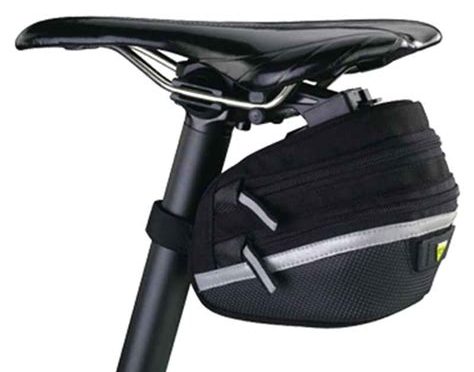
On Friday, November 25, an audio and video surveillance installation was exposed outside an apartment somewhere in Bavaria. The listening device had been discovered on a bicycle parked there and installed on it with the help of a tool bag under the saddle (see symbol picture). The interception device itself consisted of a main unit measuring approx. 12 x 12 x 1.5 cm (see technical details), to which a camera and a microphone were connected, as well as an approx. 25 x 5 x 4 cm Li-ion battery (16 Ah). The whole installation was hidden in the saddlebag in such a way that it could not be seen from the outside. Only the camera (max. approx. 1 x 1 x 1 cm with a lens diameter of max. 0.5 cm) was led to the outside via a tiny hole and was pointed at the entrance to the corresponding apartment. With the naked eye, however, this was so nevertheless impossible to identify.
A few minutes after removal of the bugging device, the bicycle was picked up by the suspected spies. Recordings made by the listening device were presumably transmitted via the mobile network with the help of a SIM card.
The design and installation of the bugging device on the bicycle make it at least conceivable that this is a spontaneously deployable installation that could be used in this form at short notice and without much lead time. In fact, numerous suppliers of surveillance technology have been marketing corresponding installations for use in the helmet storage boxes of scooters for many years.
Technical details
Li-ion Battery Pack
3.7 V, 60 Wh, 16.0 Ah
This results in an operating time of a good one to possibly even several days (depending on quality and compression) even assuming permanent image and sound transmission. A transmission that takes place either only on demand and/or only when there is movement in the camera’s field of view could possibly be possible with this battery for a period of more than a week up to several weeks (depending on the activity in the observation field).
Main unit
Connections/connected devices: microphone, camera, battery, GSM antenna
Slot for SIM card equipped with SIM from Telekom.
Data transmission from the main unit seems to be done with the help of a Sierra Wireless modem model EM7565. The modem’s GPS service was not connected to the board. Besides a plugged-in GSM antenna, an internally installed 4G antenna (antenova SR4L002) is also available.
It’s especially noticeable that the manufacturer of the main unit apparently doesn’t want to be recognized by usually printed logos. Even inside the unit, you won’t find such labels and even some of the chips don’t have any designations.
Even though the main unit has a locally fixed memory unit and can be read out via a micro-USB connection, it looks like data is transferred via the mobile network in real time, if possible. The corresponding module promises upload data rates of up to 150 Mbps and works on the LTE frequency bands B1, B2, B3, B4, B5, B7, B8, B9, B12, B13, B18, B19, B20, B26, B28, B29, B30, B32, B41, B42, B43, B46, B48 and B66.
The power supply of the main unit seems to be completely dependent on the connected battery. An internal power supply could not be determined.
More information and pictures will follow.
Source: Aufstand
